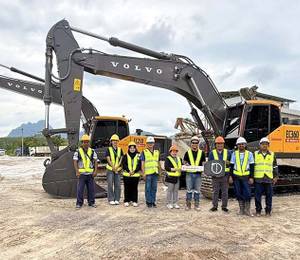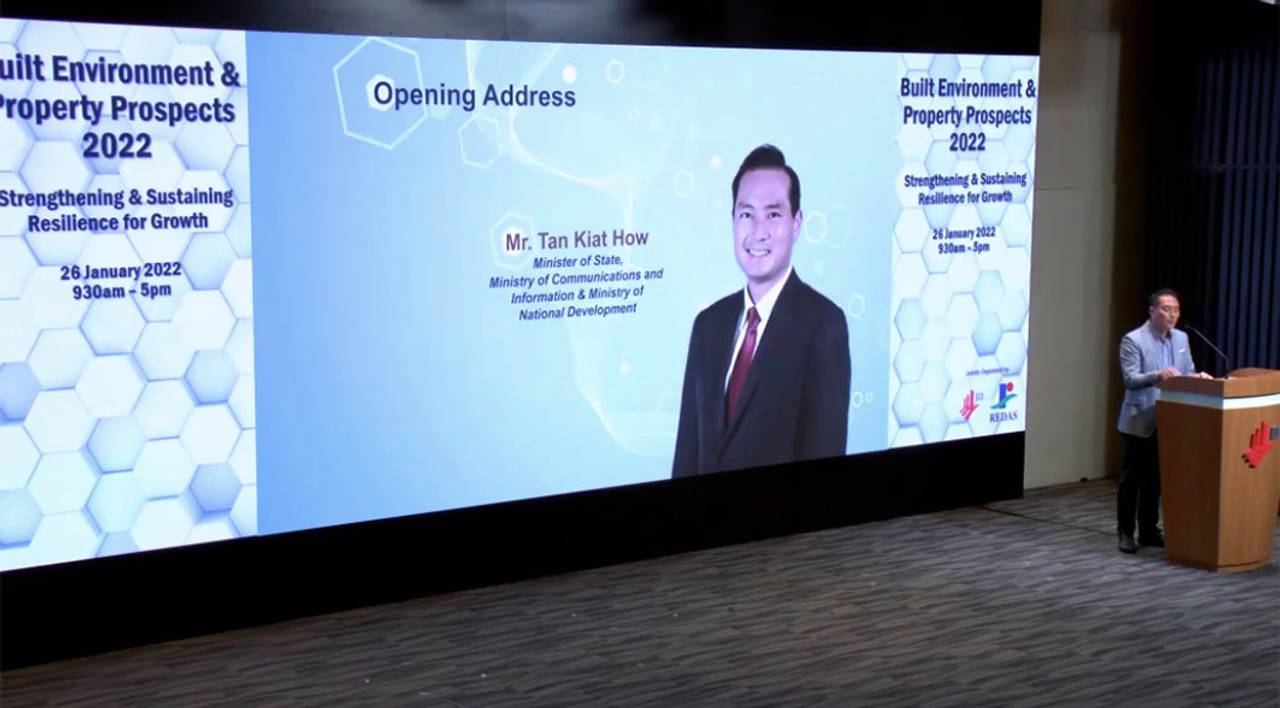The Building and Construction Authority (BCA) projects the total construction demand in Singapore to reach between S$27 and S$32 billion in 2022. The public sector is expected to contribute about 60% of the total demand, accounting for S$16-19 billion. This is supported by various public housing projects, including those under the Home Improvement Programme, as well as healthcare developments and infrastructure works such as the Cross Island MRT Line (Phase 1).
The private sector construction demand is forecast to reach between S$11 and S$13 billion, comparable with the volume in 2021. Given the latest property cooling measures, residential building demand is anticipated to moderate year-on-year amid more cautious market sentiments. However, commercial building demand is projected to rise as hotels and attractions undergo refurbishment to prepare for inbound tourism revival, and older commercial premises are earmarked for redevelopment to enhance their asset values. In addition, industrial building demand is expected to see some support from the construction of energy storage facilities and biopharmaceutical manufacturing plants.
The preliminary total construction demand for 2021 grew by 42% to about S$30 billion compared to the preceding year, largely driven by public housing and infrastructure projects as well as an improvement in investment sentiments. This was about 7% higher than the upper bound of BCA’s earlier forecast of S$23-28 billion, mainly due to rise in tender prices resulting from manpower and materials cost inflation.
The public sector construction demand increased from S$12.2 billion in 2020 to S$18.2 billion in 2021, underpinned by major projects such as the Cross Island MRT Line, Jurong Region MRT Line, Tuas Water Reclamation Plant and new Build-To-Order (BTO) units. Likewise, the private sector construction demand expanded from S$8.9 billion in 2020 to S$11.8 billion in 2021, supported by higher demand for residential, commercial and industrial building developments as the economy recovers.
Outlook for 2023-2026
Over the medium-term, BCA forecasts the total construction demand to reach between S$25 and S$32 billion per year from 2023 to 2026. The public sector is once again expected to lead the demand and contribute S$14-18 billion per year within the period, with about half of the demand coming from building projects and civil engineering works.
Besides public housing developments, there are also various major developments in the pipeline, such as MRT projects including the Cross Island Line (Phases 2 & 3) and its Punggol Extension and the Downtown Line Extension to Sungei Kadut, the Toa Payoh Integrated Development, redevelopment of Alexandra hospital and a new integrated hospital at Bedok.
The private sector construction demand is expected to remain steady from 2023 to 2026, reaching about S$11-14 billion per year, in view of healthy investment appetite amid Singapore’s strong economic fundamentals.
BCA pointed out that construction demand forecast in 2023-2026 excludes any potential awards of construction contracts for the development of Changi Airport Terminal 5 and its associated infrastructure projects as well as the expansion of Integrated Resorts, as their construction timelines are still under review due to the impact of the pandemic.
Furthermore, the total nominal construction output (value of certified progress payments) is projected to increase to S$29-32 billion for 2022, from the preliminary estimate of about S$26 billion for 2021. This is due to a steady level of construction demand and the backlog of remaining workloads that were affected by the Covid-19 pandemic since 2020.
“We see encouraging signs in the sector’s recovery. Based on BCA’s survey of progress payments, the nominal construction output is estimated to have almost reached pre-Covid levels,” said Tan Kiat How, Singapore’s Minister of State at Ministry of National Development and Ministry of Communications and Information, speaking during the BCA-REDAS Built Environment and Property Prospects Seminar 2022.
“This indicates that construction works are progressing at a steady pace. The inflow of foreign workers has steadily improved. As compared to the period when travel restrictions and tightened entry approvals were in place last year, the current monthly inflow of foreign workers has more than doubled.”
He reminded that we are not “out of the woods” yet, but we are “better prepared today, as 98% of our construction workers are vaccinated, and about half of the eligible workers have obtained their booster shots.”
Transforming the industry
Despite the sustained construction demand, Mr Tan encouraged built environment firms to “transform” as they embark on new projects. “Automation, digitalisation and sustainability will continue to disrupt many industries, including ours,” he explained. “At the same time, these developments give us the opportunity to redesign and improve our construction practices, processes and working environment.”
Mr Tan highlighted two “pressing domestic challenges” in the industry: ageing infrastructure and workforce. “It is estimated that more than 50% of the building stock will be more than 30 years old by 2025. So, how do we maintain them cost-effectively, ensure that they remain safe and sound, refresh and upgrade them to meet new sustainability standards, and preserve those that have special heritage and cultural significance to our society?” he said.
“Our built environment workforce is also ageing. About 40% of our resident Professional, Managerial, Executive and Technical (PMET) workforce are 50 years and older. It is critical to attract and retain the next generation of professionals and industry leaders.”
According to Mr Tan, the Future Economy Council (FEC) Urban System (US) Cluster Subcommittee – which is co-chaired by him and Liam Wee Sin, group chief executive of UOL Group Limited – has been studying how the sector can be more productive, digital and sustainable. “Over the last year, we have actively engaged industry stakeholders in small groups and through focus groups to get inputs and to brainstorm ideas.”
He stressed that the public sector is “committed to lead by example” in this transformation effort, and underlined two initiatives. One of them is the Productivity Gateway Framework, under which public sector projects are required to achieve a minimum 30% productivity improvement over 2010 levels through the adoption of Design for Manufacturing and Assembly (DfMA) technologies, and to implement Integrated Digital Delivery (IDD).
Another initiative is the GreenGov.SG, whereby all new buildings and existing buildings undergoing major retrofitting works are required to obtain the Platinum Super Low Energy standard, and the Maintainability badge under the Green Mark 2021 framework.
“These represent the best-in-class standards for energy efficiency and Design for Maintainability (DfM),” said Mr Tan. “For buildings with gross floor area of more than 5,000 sq m, they are required to adopt Smart Facilities Management (FM) solutions for building operations and maintenance.”
Mr Tan added that other incentive schemes to support the private sector have also been introduced by the government, including the Built Environment Transformation Gross Floor Area (GFA) scheme which private developers can tap on to become more productive, digital and sustainable. “Firms can also tap on the Construction Productivity and Capability Fund (CPCF) and the Productivity Solutions Grant (PSG) to enhance their productivity.”













